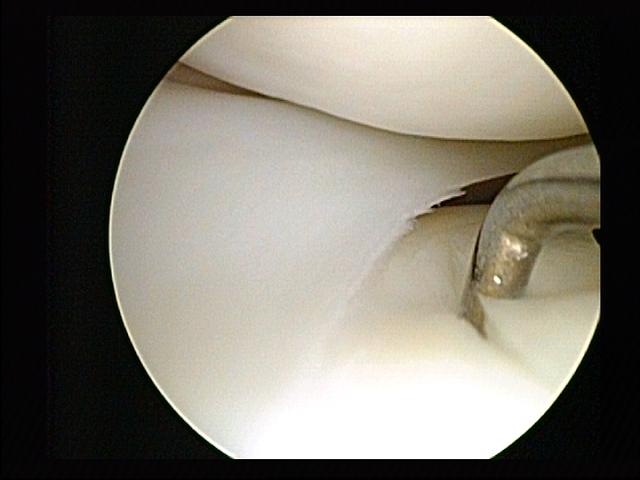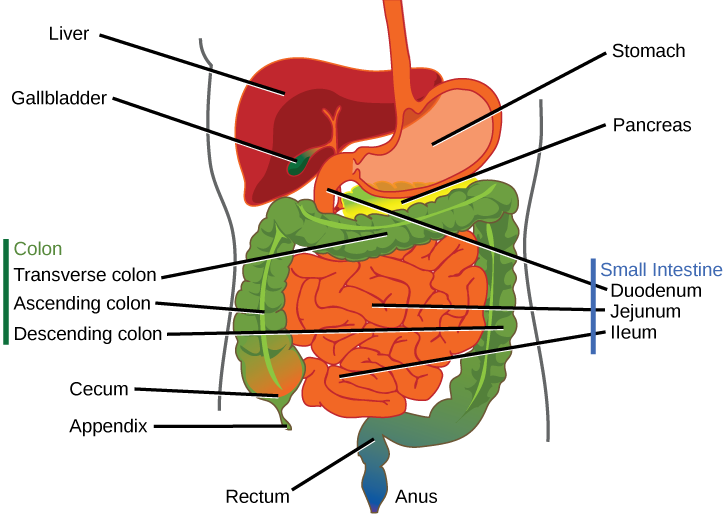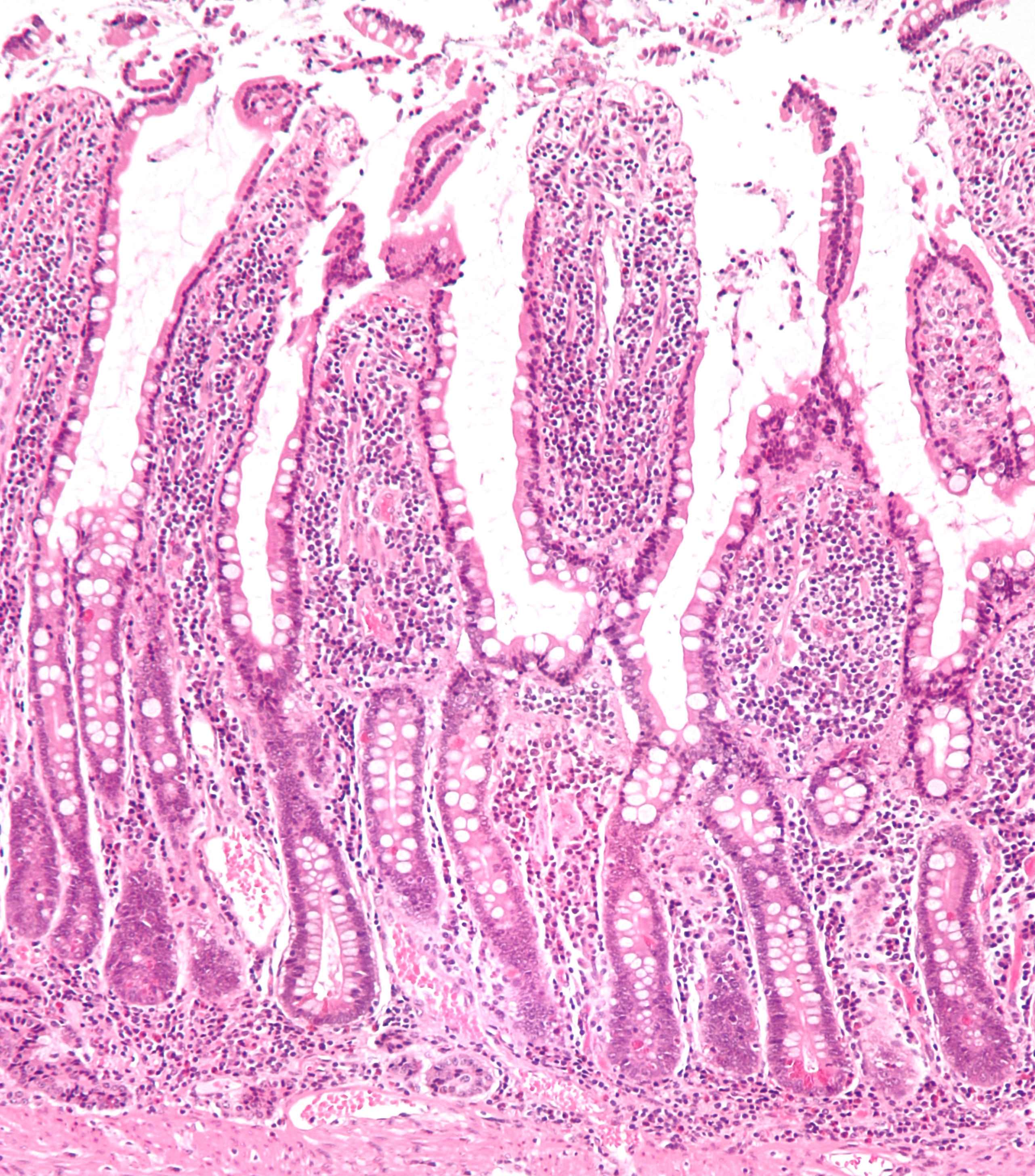|
Jejunostomy
Jejunostomy is the surgical creation of an opening (stoma) through the skin at the front of the abdomen and the wall of the jejunum (part of the small intestine). It can be performed either endoscopically, or with open surgery. A jejunostomy may be formed following bowel resection in cases where there is a need to bypass the distal small bowel and/or colon due to a bowel leak or perforation. Depending on the length of jejunum resected or bypassed the patient may have resultant short bowel syndrome and require parenteral nutrition. A jejunostomy is different from a jejunal feeding tube. A jejunal feeding tube is an alternative to a gastrostomy feeding tube and is commonly used when gastric enteral feeding is contraindicated or carries significant risks. The advantage over a gastrostomy is its low risk of aspiration due to its distal placement. Disadvantages include small bowel obstruction, ischemia Ischemia or ischaemia is a restriction in blood supply to any tissu ... [...More Info...] [...Related Items...] OR: [Wikipedia] [Google] [Baidu] |
Feeding Tube
A feeding tube is a medical device used to provide nutrition to people who cannot obtain nutrition by mouth, are unable to swallow safely, or need nutritional supplementation. The state of being fed by a feeding tube is called gavage, enteral feeding or tube feeding. Placement may be temporary for the treatment of acute conditions or lifelong in the case of chronic disabilities. A variety of feeding tubes are used in medical practice. They are usually made of polyurethane or silicone. The outer diameter of a feeding tube is measured in French units (each French unit equals mm). They are classified by the site of insertion and intended use. Medical uses There are dozens of conditions that may require tube feeding (enteral nutrition) to prevent or treat malnutrition. Conditions that necessitate feeding tubes include prematurity, failure to thrive (or malnutrition), neurologic and neuromuscular disorders, inability to swallow, anatomical and post-surgical malformations ... [...More Info...] [...Related Items...] OR: [Wikipedia] [Google] [Baidu] |
Enteral Feeding
A feeding tube is a medical device used to provide nutrition to people who cannot obtain nutrition by mouth, are unable to swallow safely, or need nutritional supplementation. The state of being fed by a feeding tube is called gavage, enteral feeding or tube feeding. Placement may be temporary for the treatment of acute conditions or lifelong in the case of chronic disabilities. A variety of feeding tubes are used in medical practice. They are usually made of polyurethane or silicone. The outer diameter of a feeding tube is measured in French catheter scale, French units (each French unit equals mm). They are classified by the site of insertion and intended use. Medical uses There are dozens of conditions that may require tube feeding (enteral nutrition) to prevent or treat malnutrition. Conditions that necessitate feeding tubes include Premature birth, prematurity, failure to thrive (or malnutrition), neurologic and neuromuscular disorders, inability to swallow, anatomic ... [...More Info...] [...Related Items...] OR: [Wikipedia] [Google] [Baidu] |
Jejunum
The jejunum is the second part of the small intestine in humans and most higher vertebrates, including mammals, reptiles, and birds. Its lining is specialized for the absorption by enterocytes of small nutrient molecules which have been previously digested by enzymes in the duodenum. The jejunum lies between the duodenum and the ileum and is considered to start at the suspensory muscle of the duodenum, a location called the duodenojejunal flexure. The division between the jejunum and ileum is not anatomically distinct. In adult humans, the small intestine is usually long (post mortem), about two-fifths of which (about ) is the jejunum. Structure The interior surface of the jejunum—which is exposed to ingested food—is covered in finger–like projections of mucosa, called villi, which increase the surface area of tissue available to absorb nutrients from ingested foodstuffs. The epithelial cells which line these villi have microvilli. The transport of nutrien ... [...More Info...] [...Related Items...] OR: [Wikipedia] [Google] [Baidu] |
Small Intestine
The small intestine or small bowel is an organ (anatomy), organ in the human gastrointestinal tract, gastrointestinal tract where most of the #Absorption, absorption of nutrients from food takes place. It lies between the stomach and large intestine, and receives bile and pancreatic juice through the pancreatic duct to aid in digestion. The small intestine is about long and folds many times to fit in the abdomen. Although it is longer than the large intestine, it is called the small intestine because it is narrower in diameter. The small intestine has three distinct regions – the duodenum, jejunum, and ileum. The duodenum, the shortest, is where preparation for absorption through small finger-like protrusions called intestinal villus, intestinal villi begins. The jejunum is specialized for the absorption through its lining by enterocytes: small nutrient particles which have been previously digested by enzymes in the duodenum. The main function of the ileum is to absorb vitami ... [...More Info...] [...Related Items...] OR: [Wikipedia] [Google] [Baidu] |
Endoscopy
An endoscopy is a procedure used in medicine to look inside the body. The endoscopy procedure uses an endoscope to examine the interior of a hollow organ or cavity of the body. Unlike many other medical imaging techniques, endoscopes are inserted directly into the organ. There are many types of endoscopies. Depending on the site in the body and type of procedure, an endoscopy may be performed by a doctor or a surgeon. During the procedure, a patient may be fully conscious or anaesthesia, anaesthetised. Most often, the term ''endoscopy'' is used to refer to an examination of the upper part of the human gastrointestinal tract, gastrointestinal tract, known as an esophagogastroduodenoscopy. Similar instruments are called borescopes for nonmedical use. History Adolf Kussmaul was fascinated by sword swallowers who would insert a sword down their throat without gagging. This drew inspiration to insert a hollow tube for observation; the next problem to solve was how to shine light th ... [...More Info...] [...Related Items...] OR: [Wikipedia] [Google] [Baidu] |
Open Surgery
Minimally invasive procedures (also known as minimally invasive surgeries) encompass surgical techniques that limit the size of incisions needed, thereby reducing wound healing time, associated pain, and risk of infection. Surgery by definition is invasive, and many operations requiring incisions of some size are referred to as ''open surgery''. Incisions made during open surgery can sometimes leave large wounds that may be painful and take a long time to heal. Advancements in medical technologies have enabled the development and regular use of minimally invasive procedures. For example, endovascular aneurysm repair, a minimally invasive surgery, has become the most common method of repairing abdominal aortic aneurysms in the US as of 2003. The procedure involves much smaller incisions than the corresponding open surgery procedure of open aortic surgery. Interventional radiologists were the forerunners of minimally invasive procedures. Using imaging techniques, radiologis ... [...More Info...] [...Related Items...] OR: [Wikipedia] [Google] [Baidu] |
Bowel Resection
A bowel resection or enterectomy (''wikt:entero-#Prefix, enter-'' + ''wikt:-ectomy#Suffix, -ectomy'') is a surgery, surgical procedure in which a part of an intestine (bowel) is removed, from either the small intestine or large intestine. Often the word ''enterectomy'' is reserved for the word sense, sense of small bowel resection, in distinction from colectomy, which covers the sense of large bowel resection. Bowel resection may be performed to treat gastrointestinal cancer, bowel ischemia, necrosis, or bowel obstruction, obstruction due to scar tissue, volvulus, and hernias. Some patients require ileostomy or colostomy after this procedure as alternative means of excretion. Complications of the procedure may include anastomotic leak or dehiscence, hernias, or adhesions causing partial or complete bowel obstruction. Depending on which part and how much of the intestines are removed, there may be digestion, digestive and metabolism, metabolic challenges afterward, such as short bow ... [...More Info...] [...Related Items...] OR: [Wikipedia] [Google] [Baidu] |
Short Bowel Syndrome
Short bowel syndrome (SBS, or simply short gut) is a rare malabsorption disorder caused by a lack of functional small intestine. The primary symptom is diarrhea, which can result in dehydration, malnutrition, and weight loss. Other symptoms may include bloating, heartburn, feeling tired, lactose intolerance, and foul-smelling stool. Complications can include anemia and kidney stones. Most cases are due to the surgical removal of a large portion of the small intestine. This is most often required due to Crohn's disease in adults and necrotising enterocolitis in young children. A recent national study showed the prevalence of SBS was 1% among patients with Crohn's disease. Other causes include damage to the small intestine from other means and being born with an abnormally short intestine. It usually does not develop until less than of the normally small intestine remains. Treatment may include a specific diet, medications, or surgery. The diet may include slightly salty an ... [...More Info...] [...Related Items...] OR: [Wikipedia] [Google] [Baidu] |
Parenteral Nutrition
Parenteral nutrition (PN), or intravenous feeding, is the feeding of nutritional products to a person intravenously, bypassing the usual process of eating and digestion. The products are made by pharmaceutical compounding entities or standard pharmaceutical companies. The person receives a nutritional mix according to a formula including glucose, salts, amino acids, lipids and vitamins and dietary minerals. It is called total parenteral nutrition (TPN) or total nutrient admixture (TNA) when no significant nutrition is obtained by other routes, and partial parenteral nutrition (PPN) when nutrition is also partially enteric. It is called peripheral parenteral nutrition (PPN) when administered through vein access in a limb rather than through a central vein as in central venous nutrition (CVN). Medical uses Total parenteral nutrition (TPN) is provided when the gastrointestinal tract is nonfunctional because of an interruption in its continuity (it is blocked, or has a leak – a ... [...More Info...] [...Related Items...] OR: [Wikipedia] [Google] [Baidu] |
Gastrostomy
A gastrostomy is the creation of an artificial external opening into the stomach for nutritional support or gastric decompression. Typically this would include an incision in the patient's epigastrium as part of a formal operation. When originally devised over a century ago the procedure was completed through open surgery using the Stamm technique. It can be performed through surgical approach, percutaneous approach by interventional radiology, percutaneous endoscopic gastrostomy (PEG) or percutaneous ultrasound gastrostomy (PUG). A gastrostomy may be required due to illness, trauma or disability impacting upon the ability to eat or swallow safely, or conditions causing increased nutritional requirement and once formed (or for some techniques, during formation), a gastrostomy tube is inserted. Techniques The Stamm gastrostomy is an open technique, requiring an upper midline laparotomy and gastrotomy, with the catheter brought out in the left hypochondrium. It was first devi ... [...More Info...] [...Related Items...] OR: [Wikipedia] [Google] [Baidu] |
Pulmonary Aspiration
Pulmonary aspiration is the entry of solid or liquid material such as pharyngeal secretions, food, drink, or stomach contents from the oropharynx or gastrointestinal tract, into the trachea and lungs. When pulmonary aspiration occurs during eating and drinking, the aspirated material is often colloquially referred to as "going down the wrong pipe". Consequences of pulmonary aspiration include no injury at all, chemical pneumonitis, pneumonia, or even death from asphyxiation. These consequences depend on the volume, chemical composition, particle size, and presence of infectious agents in the aspirated material, and on the underlying health status of the person. In healthy people, aspiration of small quantities of material is common and rarely results in disease or injury. People with significant underlying disease or injury are at greater risk for developing respiratory complications following pulmonary aspiration, especially hospitalized patients, because of certain factors ... [...More Info...] [...Related Items...] OR: [Wikipedia] [Google] [Baidu] |
Small Bowel
The small intestine or small bowel is an organ in the gastrointestinal tract where most of the absorption of nutrients from food takes place. It lies between the stomach and large intestine, and receives bile and pancreatic juice through the pancreatic duct to aid in digestion. The small intestine is about long and folds many times to fit in the abdomen. Although it is longer than the large intestine, it is called the small intestine because it is narrower in diameter. The small intestine has three distinct regions – the duodenum, jejunum, and ileum. The duodenum, the shortest, is where preparation for absorption through small finger-like protrusions called intestinal villi begins. The jejunum is specialized for the absorption through its lining by enterocytes: small nutrient particles which have been previously digested by enzymes in the duodenum. The main function of the ileum is to absorb vitamin B12, bile salts, and whatever products of digestion that were not absorbed ... [...More Info...] [...Related Items...] OR: [Wikipedia] [Google] [Baidu] |







